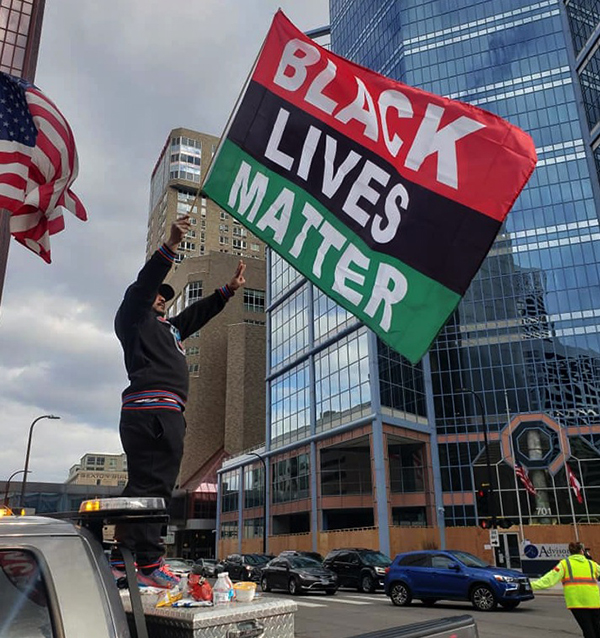LOS ANGELES — An exhibit showcasing the rich history and contributions of Black cowboys in the American West is now on display at the Autry Museum of the American West in the Marilyn and Calvin Gross Gallery.
The exhibit, “Black Cowboys: An American Story,” is on display through Jan. 4.
Conceived and organized by the Witte Museum in San Antonio, Texas, the exhibit dismisses the notion of a whites-only west. It offers a clearer picture of the Black west and a more diverse portrait of the American frontier.
“The individual stories of Black cowboys — from histories of discrimination to legacies of excellence —illustrate the strength and persistence of the men, women and children who raised and roped cattle for generations,” said Michelle Everidge, CEO and president of the Witte Museum.
Visitors can be transported through time to meet a variety of real Black cowboys, appreciate their profound impact on American history and learn how they tamed and trained horses, tended livestock and rode on the trail with thousands of cattle across America.
The exhibit shows how, over time, the roles of Black cowboys evolved as they used the skills they learned on the trail to own and manage ranches, serve as lawmen, compete in rodeos and perform as entertainers.
Today, the lives and legacies of the historic trailblazers have inspired new generations to explore the Black cowboy culture of the past through contemporary expressions.
Hollywood has long depicted the classic cowboy as a rugged white male hero who embodies values such as honesty, loyalty and bravery.
White, male cowboys included Wild Bill Hickok, Hopalong Cassidy, the Lone Ranger, and Matt Dillon. White actors like John Wayne, Clint Eastwood, and, more recently, Kevin Costner in “Yellowstone” have helped romanticize the west.
The entertainment industry nearly whitewashed the notion of anyone other than a white cowboy winning the west and making it a safe place to inhabit by barely acknowledging the existence, contributions and impact of the Black cowboy who was and continues to be an essential part of American heritage.
Two Black actors, Herb Jeffries and Woody Strode, were pioneers in breaking down racial barriers in Hollywood, particularly in western films. Both faced significant career challenges, with limited opportunities and stereotypical roles.
Jeffries, known as the “Bronze Buckaroo,” was a star of five all-Black-cast singing cowboy movies in the 1930s and 40s.
Woody Strode, a former football player (Los Angeles Rams), also gained fame portraying cowboys in “Once Upon A Time in the West,” “The Man Who Shot Liberty Valance” and “The Professionals.”
In recent years, Jeffries and Strode have been recognized and celebrated as trailblazers in the entertainment industry.
The unsung real life Black cowboys include Bass Reeves (known as the first Black U.S. marshal), Nat Love (former slave who became a successful cattle driver and sharp shooter), bulldogging inventor Bill Pickett (legendary rodeo performer and first Black man inducted into the National Rodeo Hall of Fame), Bose Ikard (part of the Goodnight-Loving Trail), George Glenn (a former slave who became a skilled cowhand and trail driver), and Mary Fields (known as “Stagecoach Mary,” a former slave who became a mail carrier known for her resilience on the frontier).
The Autry exhibit reveals that in the late 1800s, one in every four cowboys on the trail was Black, highlighting their importance as part of the American legacy and their crucial role in shaping the American west.
Attendees will see historical and contemporary objects, photographs and personal stories that convey the work and spirit of Black cowboys, including their equestrian skills, ranch work and performances in rodeos, Western films and music.
Videos created for the exhibition highlight individual Black cowfolk who have kept those traditions alive, past and present.
The Autry’s presentation features essential contributions by the Buffalo Soldiers, world champion bull rider Charlie Sampson, and Sharon Braxton, one of the first female African-American barrel racers in the Women’s Professional Rodeo Association.
Notable artifacts include early film posters from Bill Pickett’s “The Bull-Dogger” (1922), costumes used in the 2021 Netflix film “The Harder They Fall,” and photographs and documents depicting the work and skills of Black cowboys.
“With this exhibition, the history of the most mythologized of American figures, the cowboy, gets a long overdue expansion,” said Stephen Aron, Calvin and Marilyn Gross director and president and CEO of the Autry Museum of the American West. “I am particularly excited by what the Autry has added to the Witte’s exhibition.”
Black cowboys, known for their horsemanship, roping and cattle-handling skills, worked in various roles, including as ranch hands, cowhands, rodeo riders, and even as Buffalo Soldiers, a group of African American soldiers who protected settlers and travelers in the west. Many were also skilled in other areas, such as leatherwork and horse breeding.
Black cowboys were present in the Americas as early as the 16th century. They accompanied Spanish conquistadors and later worked on ranches and farms.
During the 19th century, Black cowboys were an integral part of the cattle industry, working as cowhands, ranch hands and rodeo riders. They helped drive cattle across the Great Plains and worked on ranches in Texas, Oklahoma and other states.
The legacy of Black cowboys continues to inspire and remind people of the importance of diversity, inclusion and representation in American history.
For more information about the exhibit and the museum, visit theautry.org.
Darlene Donloe is a freelance reporter for Wave Newspapers who covers South Los Angeles. She can be reached at ddonloe@gmail.com.
JUMPHEAD
Museum exhibit shines spotlight on Black cowboys
JUMPCAPTION
A member of the Compton Cowboys is pictured in the ‘Black Cowboys: An American Story’ exhibit at the Autry Museum of the American West. The exhibit runs through next Jan. 4.
Courtesy photo




